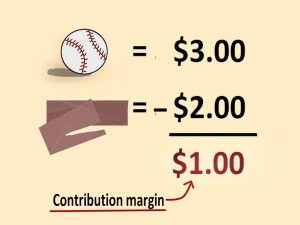Contribution Margin Ratio (CM Ratio)
Learning Objectives:
- Define and explain contribution margin ratio.
- Calculate CM ratio.
- What is the importance and benefit of calculating CM ratio?
- Contribution margin percentage or average
- Definition of Contribution Margin Ratio
- Formula
- Calculation
- Importance
- Review Problems
- Contribution Margin Ratio Calculator
Definition of Contribution Margin Ratio:
The contribution margin as a percentage of total sales is referred to as contribution margin ratio (CM Ratio).
Formula of CM Ratio (Contribution Margin Ratio Formula):
Formula or equation of CM ratio is as follows:
[ CM Ratio = Contribution Margin / Sales ]
(Above can be modified as contribution margin percentage formula ,incremental contributionmargin formula , average CPR formula , cvp formula , unit or segment break even point.
This ratio is extensively used in cost volume profit calculations.
Calculation of Contribution Margin Ratio:
Contribution margin ratio can be calculated by dividing contribution margin with sales.How tocalculate contribution margin ratio/ percentage per unit is shown by the following example.
Example:
Consider the following contribution margin income statement of A. Q. Asem private Ltd. in which sales revenues, variable expenses, and contribution margin are expressed as percentage of sales.
| Total | Per Unit | Percent of Sales | |
| Sales (400 units) | $100,000 | $250 | 100% |
| Less variable expenses | 60,000 | 150 | 60% |
| ———— | ———— | ———— | |
| Contribution margin | $40,000 | $100 | 40% |
| ====== | ====== | ||
| Less fixed expenses | 35,000 | ||
| ———— | |||
| Net operating income | $5,000 | ||
| ====== | |||
|
|
|||
According to above data of A. Q. Asem private Ltd. the computations are:
Contribution Margin Ratio = (Contribution Margin / Sales) × 100
= ($40,000 / $100,000) × 100
= 40%
In a company that has only one product such as A. Q. Asem CM ratio can also be calculated as follows:
Contribution Margin Ratio = (Unit contribution margin / Unit selling price) × 100
= ($100 / $250) × 100
= 40%
Importance of Contribution Margin Ratio:
The CM ratio is extremely useful and important since it shows how the contribution margin will be affected by a change in total sales. To illustrate notice that A. Q. Asem has a CM ratio of 40%. This means that for each dollar increase in sales, total contribution margin will increase by 40 cents ($1 sales × CM ratio of 40%). Net operating income will also increase by 40 cents, assuming that fixed cost do not change.
The impact on net operating income of any given dollar change in total sales can be computed in seconds by simply applying the contribution margin ratio to the dollar change. For example if the A. Q. Asem plans a $30,000 increase in sales during the coming month, the contributionmargin should increase by $12,000 ($30,000 increased sales × CM ratio of 40%). As we noted above, Net operating income will also increase by $12,000 if fixed cost do not change. This is verified by the following table:
| Sales Volume | Percent of Sales | |||
| Percent | Expected | Increase | ||
| Sales | $100,000 | $130,000 | $30,000 | 10% |
| Less variable expenses | 60,000 | 78,000 | 18,000 | 60% |
| ——— | ——– | ——– | —— | |
| Contribution margin | 40,000 | 52,000 | 12,000 | 40% |
| Less fixed expenses | 35,000 | 35,000 | 0 | ====== |
| ——— | ——– | ——– | ||
| Net operating income | 5,000 | 17,000* | 12,000 | |
| ====== | ====== | ====== | ||
*Expected net operating income of $17,000 can also be calculated directly by using the following formula:
[P*= (Sales × CM ratio) – Fixed Cost]
P* = Profit
Review Problems:
Problem 1:
Sales = $5,000,000
CM = 0.40
Fixed cost = $1,600,000
Calculate Profit.
Solution:
P = (Sales × CM ratio) – Fixed Cost
P = ($5,000,000 × 0.4) – $1,600,000
P = $2,000,000 – $1,600,000
= $400,000
Problem 2:
A company has budgeted sales of $200,000, a profit of $60,000 and fixed expenses of $40,000.
Calculate contribution margin ratio.
Solution:
P = (Sales × CM ratio) – Fixed Cost
$60,000 = ($200,000 × CM ratio) – $40,000
$60,000 + $40,000 = ($200,000 × CM ratio)
CM ratio = $100,000 / $200,000
= 0.5
Some managers prefer to work with the contribution margin ratio rather than the unitcontribution margin. The CM ratio is particularly valuable in situations where trade-offs must be made between more dollar sales of one product versus more dollar sales of another. Generally speaking, when trying to increase sales, products that yield the greatest amount of contribution margin per dollar of sales should be emphasized.
About The Author
admin
As a administrator i am trying to provide you the the content easy to understand and remember. I always use easy English and simple examples from real life for better understanding.

Above examples help me alot understanding CM Ratio ..Thanks!
hi thanks your contribution margin ratio is extremely esy to follow. can you work out the contribution margin and fixed cost with only available information of sales 480 000 and profit of 160 000